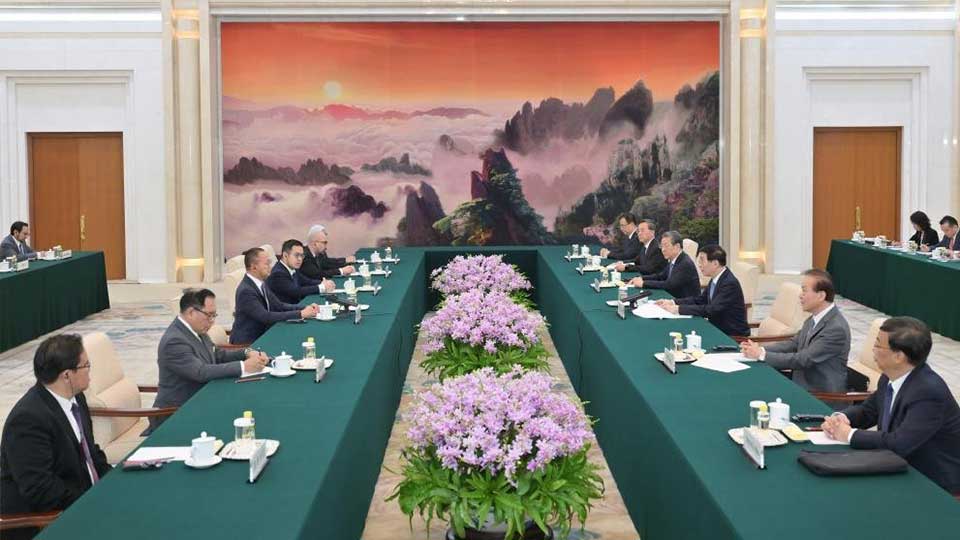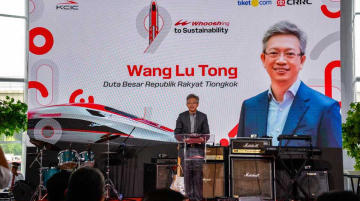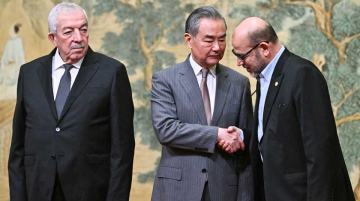
When Eddy Soeparno, Deputy Speaker of Indonesia’s People’s Consultative Assembly (MPR), met with China’s top leaders in Beijing last week, the visit went far beyond the usual diplomatic formalities. It was an example of the kind of purposeful engagement that should define the future of Indonesia-China relations: pragmatic, forward-looking, and focused on the global challenges of our time.
Soeparno’s visit signaled a shift in tone and substance. Rather than doubling down on the old formula of trade and infrastructure, the discussions emphasized sustainability, clean energy, and green growth—an evolution long overdue in one of Southeast Asia’s most consequential bilateral relationships.

In Beijing, Soeparno was received by Wang Huning, Chairman of the Chinese People’s Political Consultative Conference (CPPCC) and one of the country’s most influential political thinkers. Their talks spanned green investment, energy transition, carbon market development, and educational cooperation. Both sides also reaffirmed their commitment to the Bandung Spirit—mutual respect, sovereign equality, and South-South cooperation—as a foundation for deepening ties.
This is exactly the kind of dialogue the two countries should be having. For over two decades, China-Indonesia relations have been dominated by transactional projects: roads, railways, and mining concessions. Many of these have had costs—environmental, social, and strategic. A pivot to a greener, more resilient partnership is not only welcome; it’s necessary.
Soeparno made clear that Indonesia’s development priorities are changing. Under incoming President Prabowo Subianto, energy, water, and food security will top the national agenda. That shift requires long-term, sustainable investment—something China is uniquely positioned to support through its technology, capital, and environmental experience.
In meetings with Chinese Vice Minister of Ecology and Environment Guo Fang, Soeparno discussed air quality, carbon trading, and China’s own path from smog to sustainability. He expressed interest in applying those lessons to Indonesia’s transition—a sign of a more collaborative approach to climate and environmental governance.
He also took time to observe China’s domestic achievements firsthand. In Beijing, Soeparno visited the Municipal Administrative Center, a flagship of China’s eco-urban development and a node in the UN’s Urban SDG Knowledge Platform. In Shenzhen, he toured the facilities of electric vehicle giant BYD and tech powerhouse Huawei, exploring how digital and green technologies could support Indonesia’s transformation. As electric vehicles become more visible on Indonesian streets, such exchanges have growing strategic relevance.
But the most candid moments came during Soeparno’s engagement with Indonesian students in Beijing. The students didn’t hold back: they raised concerns about the barriers to Chinese investment in Indonesia, particularly bureaucracy, lack of transparency, and environmental harm. Soeparno acknowledged these frustrations and pledged to advocate for streamlined but accountable investment processes. He also encouraged the students to study China’s energy transition and return equipped to contribute to Indonesia’s own transition.
Still, goodwill and vision alone are not enough. The hard part is implementation.
For all the high-minded rhetoric, the reality on the ground remains sobering. Chinese investment in Indonesia has too often been synonymous with environmental degradation. Nickel mining and smelting as well as coal-fired power plants—many underwritten by Chinese firms—have led to deforestation, pollution, and the displacement of local communities, particularly in Sulawesi. These outcomes directly contradict the principles of green cooperation discussed in Beijing.
Ironically, China itself has made remarkable environmental strides. In 2013, Beijing recorded only 13 “blue sky days.” A decade later, that number has surpassed 300, thanks to stringent regulations and major investments in clean energy. But this environmental responsibility hasn’t always followed Chinese capital abroad.
That must change.
If China wants to be seen as a global leader on climate, it must ensure its companies meet high environmental standards overseas—not just at home. Similarly, Indonesia must do its part: strengthen environmental oversight, improve transparency in licensing and procurement, and empower communities to hold investors accountable.
Soeparno’s visit laid a promising foundation. His reference to the spirit of Bandung was more than rhetorical. It reflected a desire to build a partnership with China that is not just big, but better—one anchored in shared responsibility, mutual benefit, and long-term resilience.
With President Prabowo preparing to launch his administration’s energy and industrial strategy, now is the time to translate promises into policy. The areas discussed during Soeparno’s visit—carbon markets, youth education, green investment, sustainable development—must move beyond diplomatic communiqués. They should be written into regulations, pilot programs, budgets, and enforcement frameworks.
Deputy Speaker Soeparno has set a new benchmark in Indonesia–China diplomatic engagement—one that more accurately reflects the demands of our era. The question now is whether Jakarta’s institutions and China’s investors are prepared to follow through.
This article was co-authored by Yeta Purnama, a researcher at the Center of Economic and Law Studies (CELIOS), and Muhammad Zulfikar Rakhmat, Director of the China-Indonesia Desk at CELIOS.





